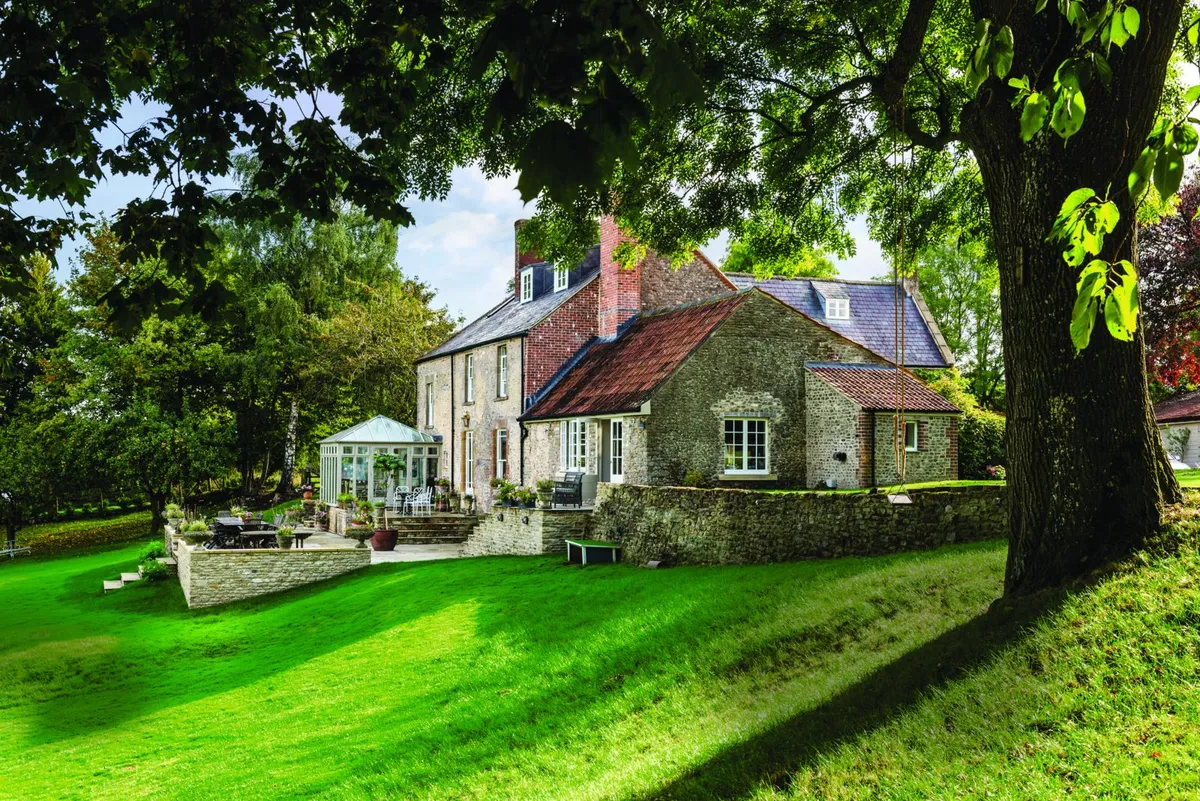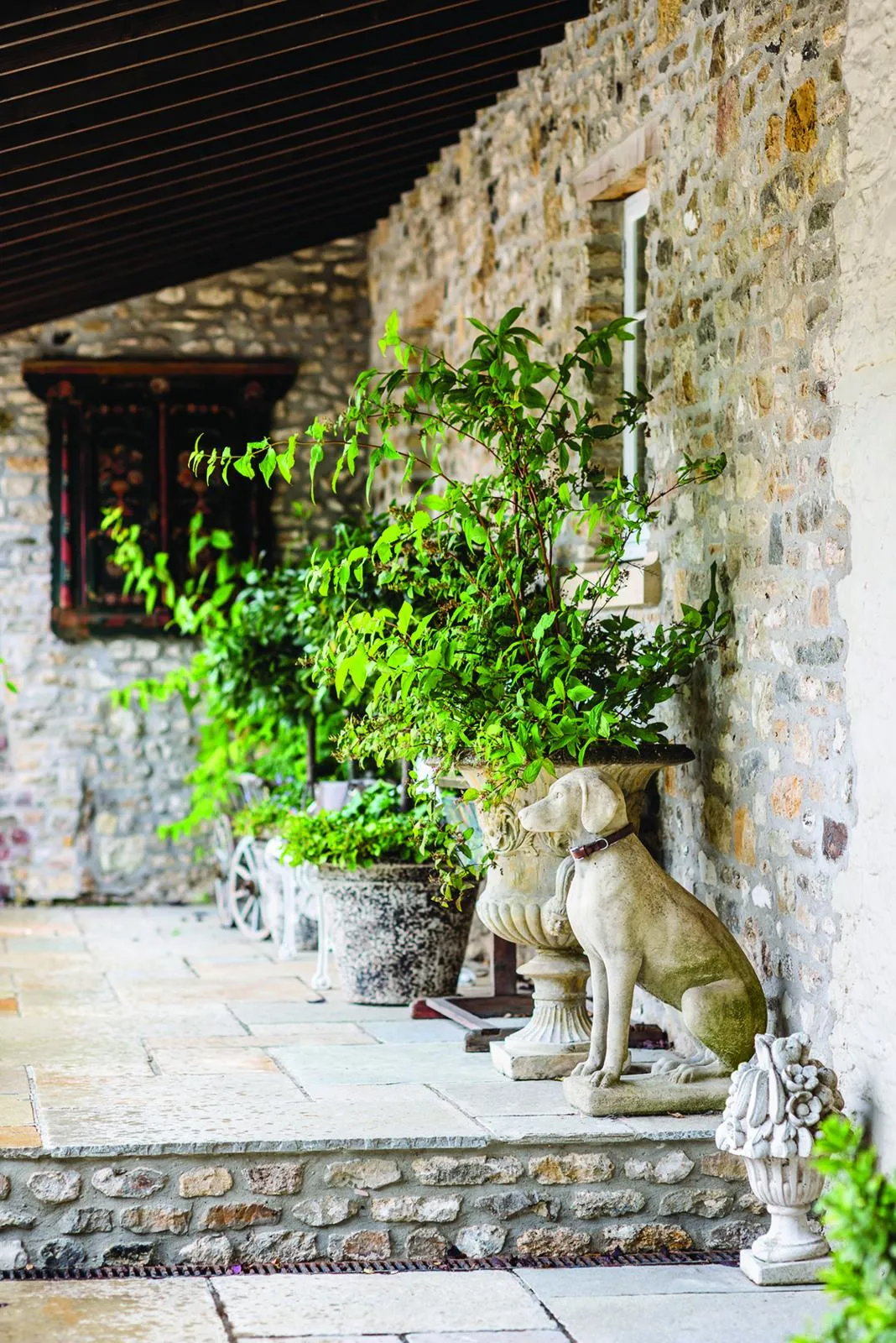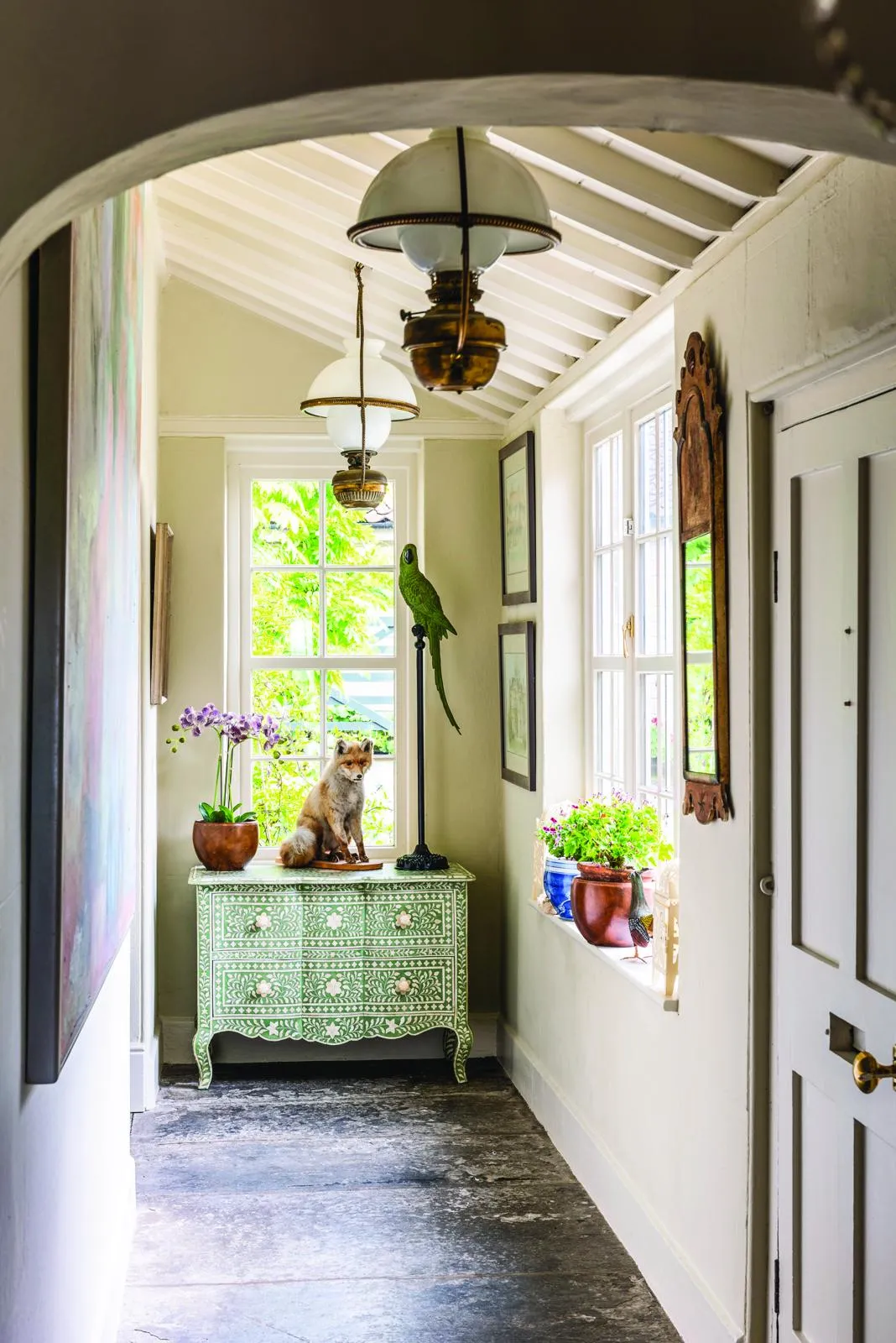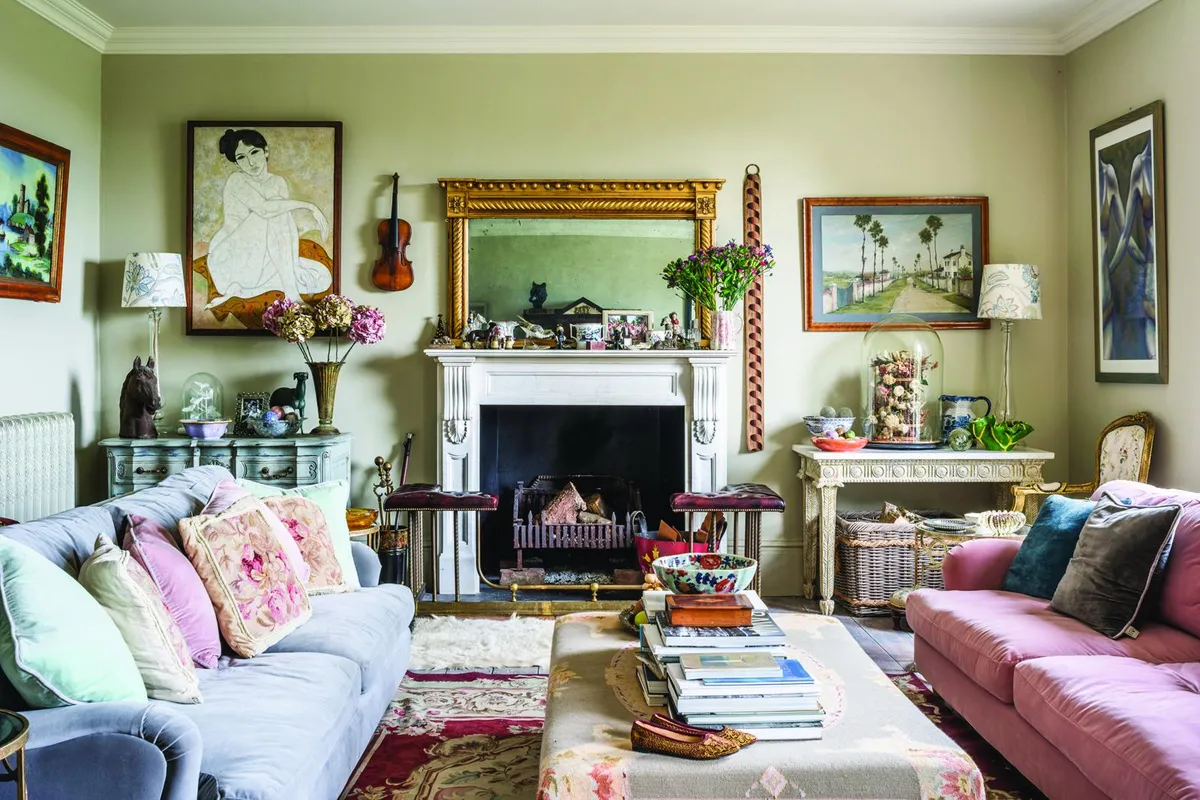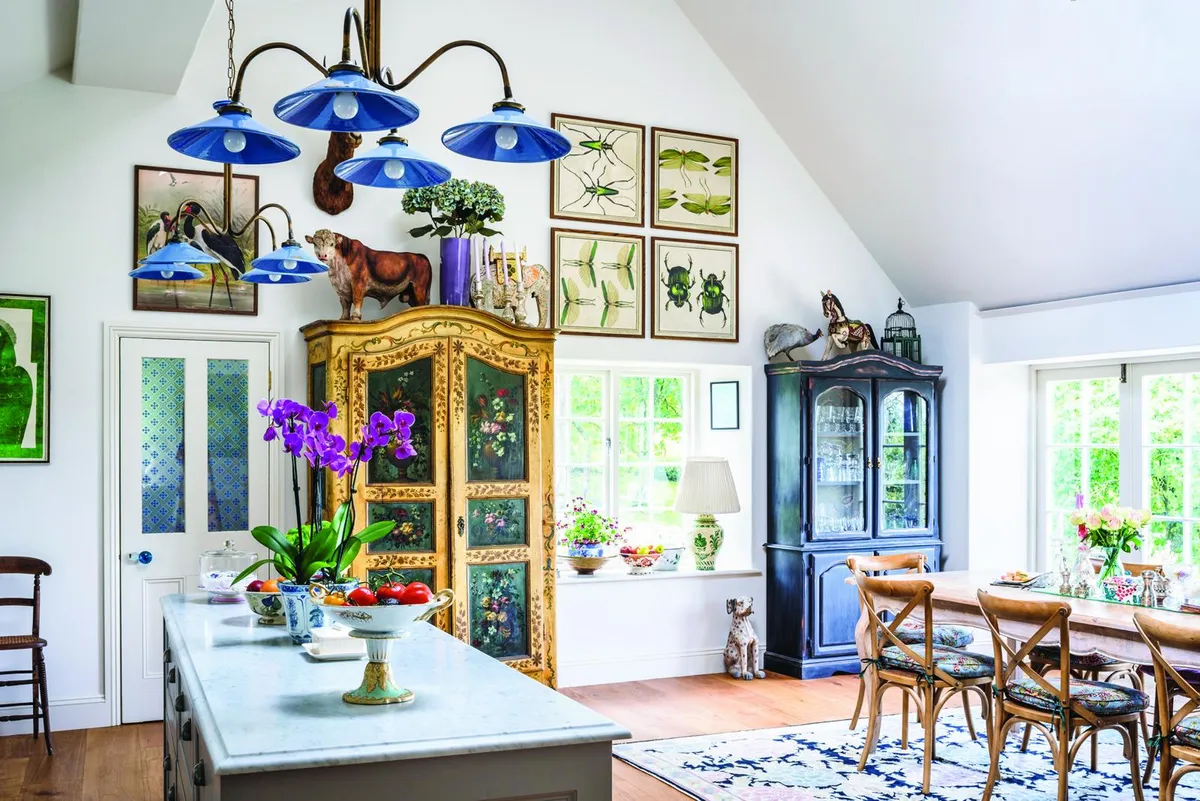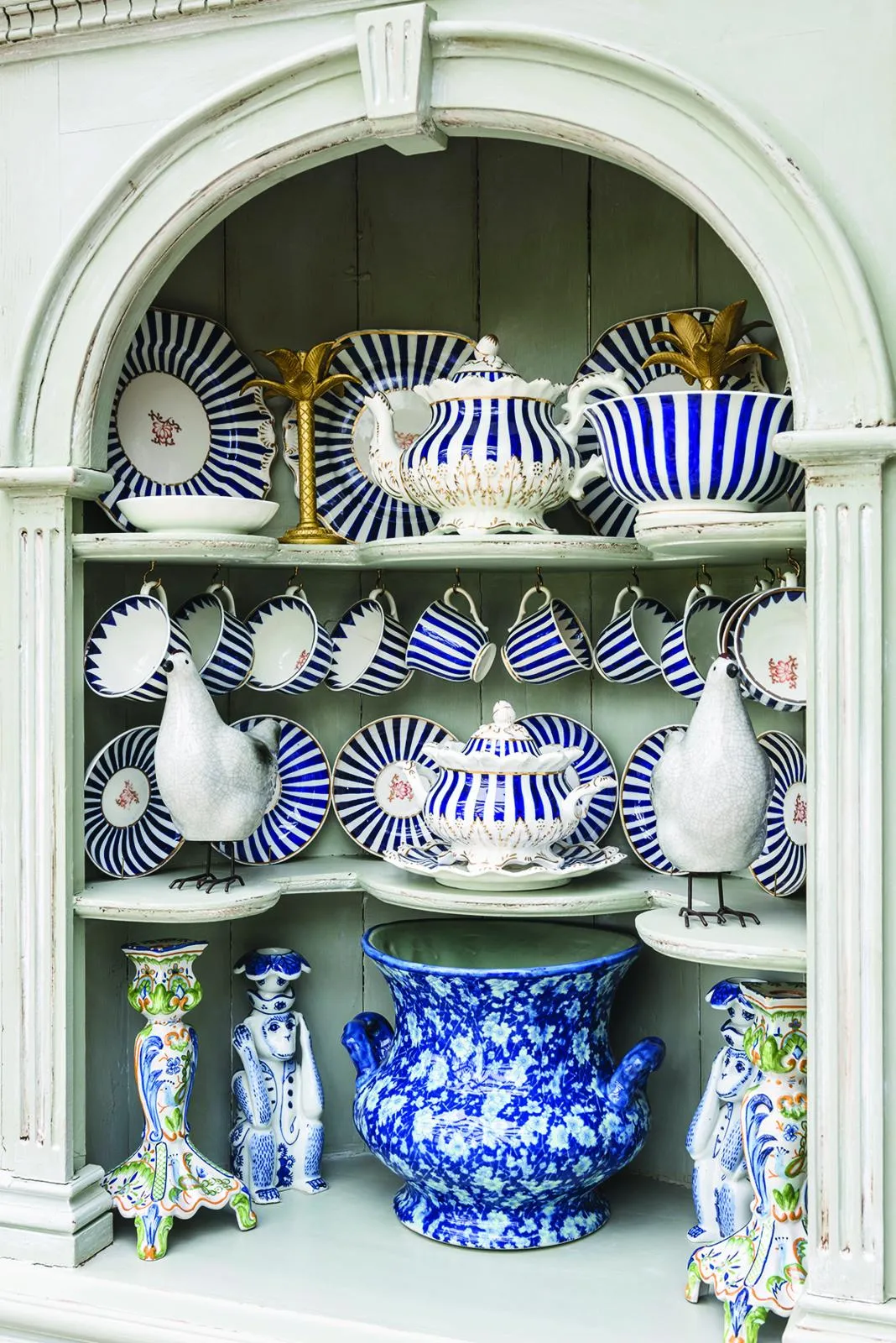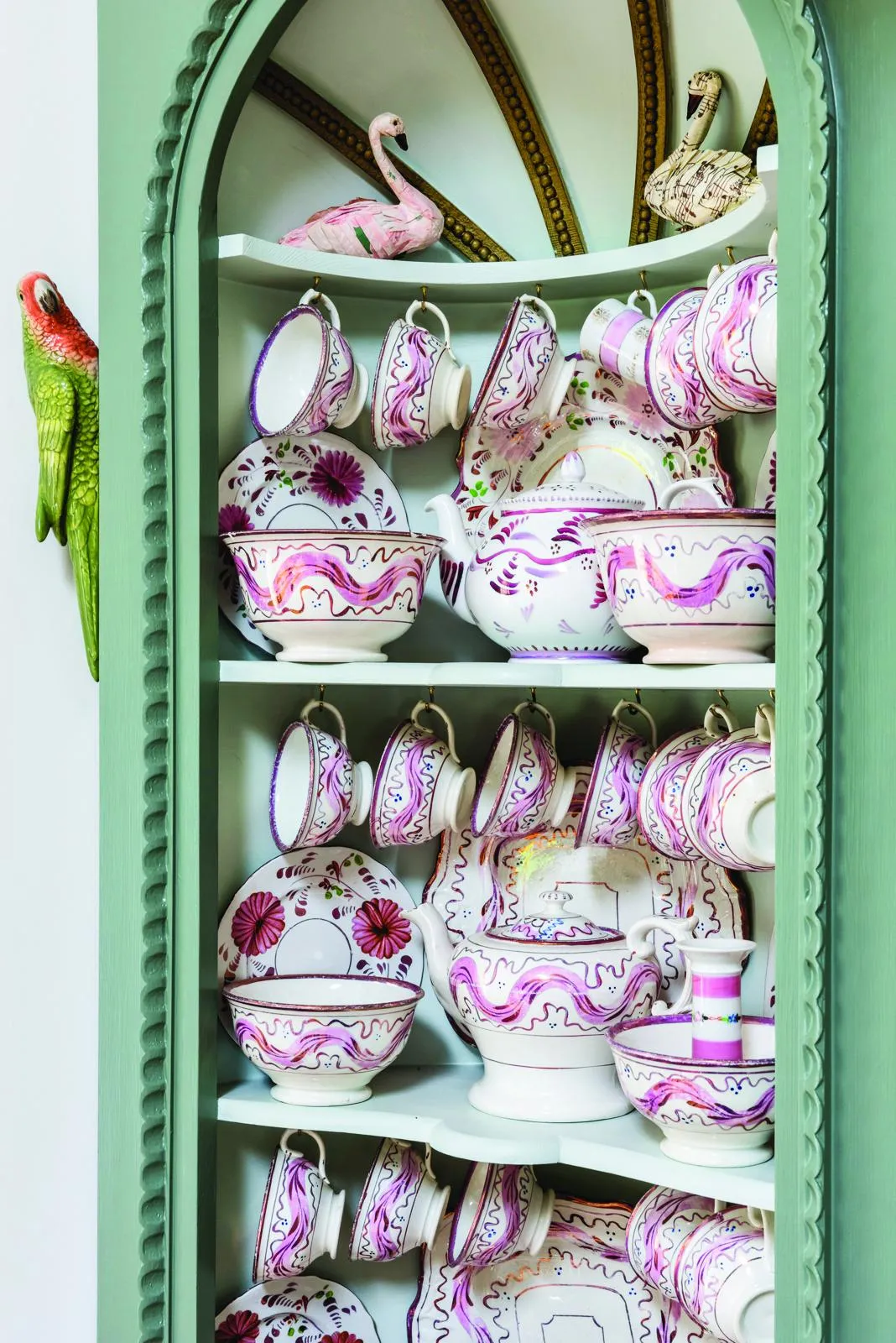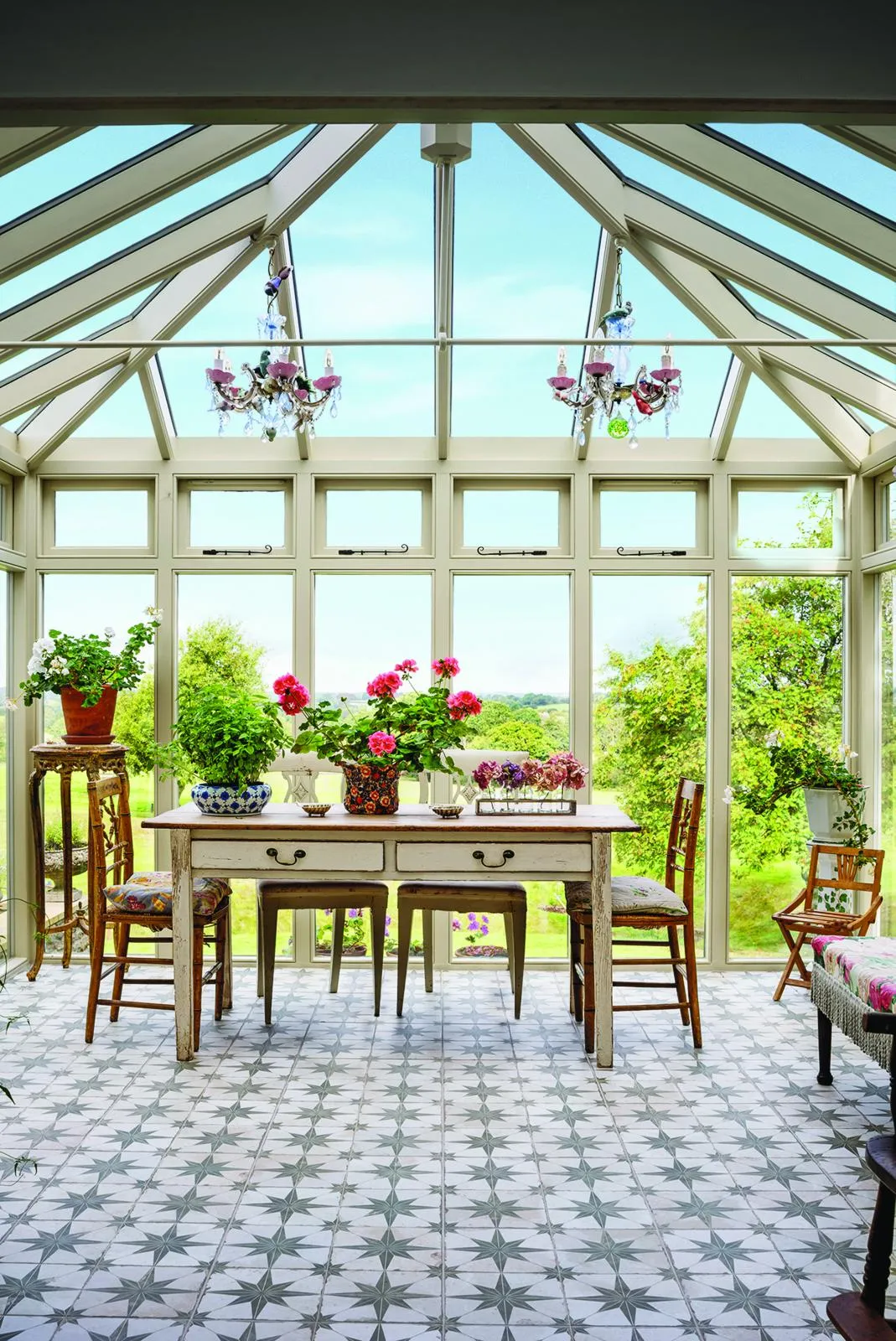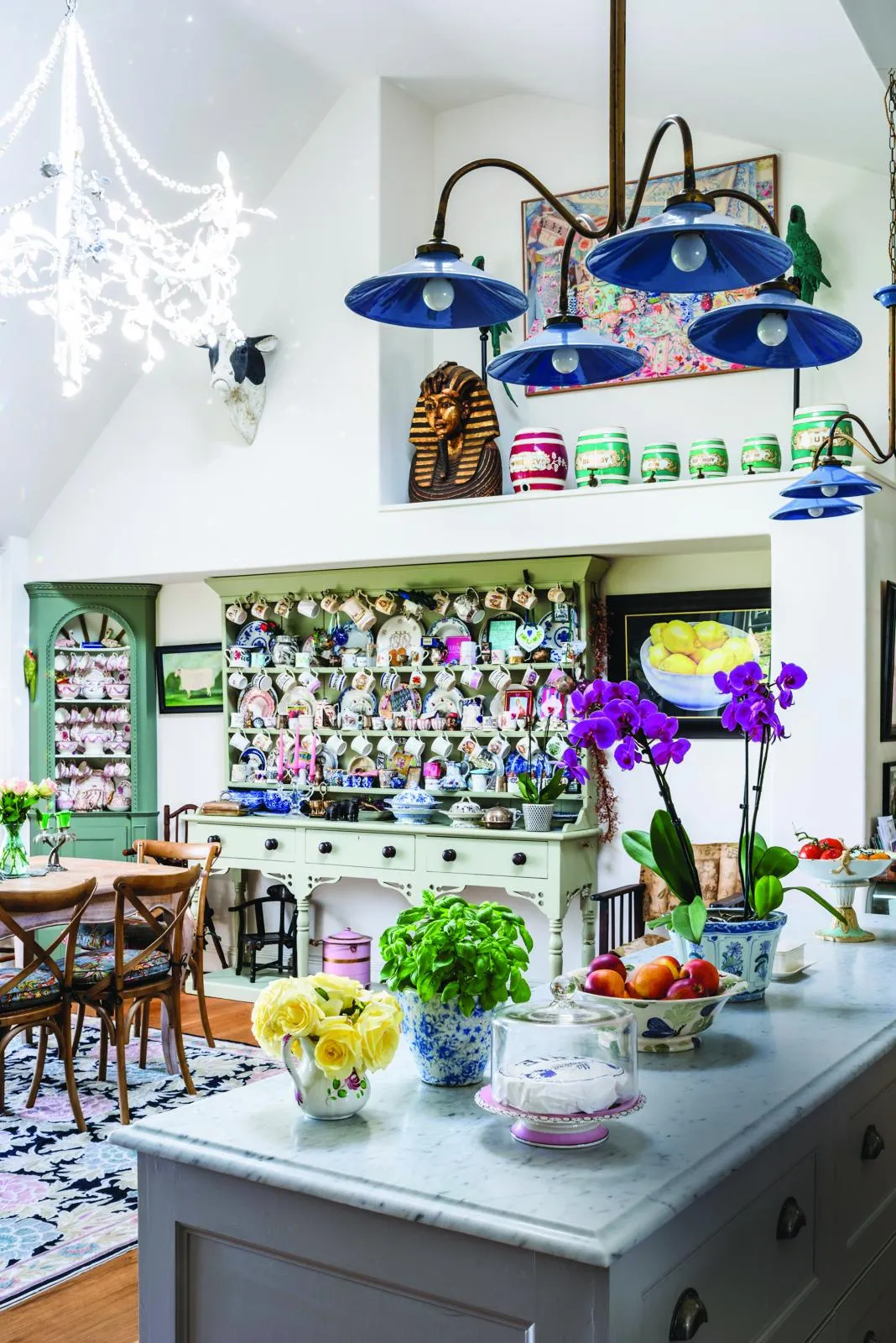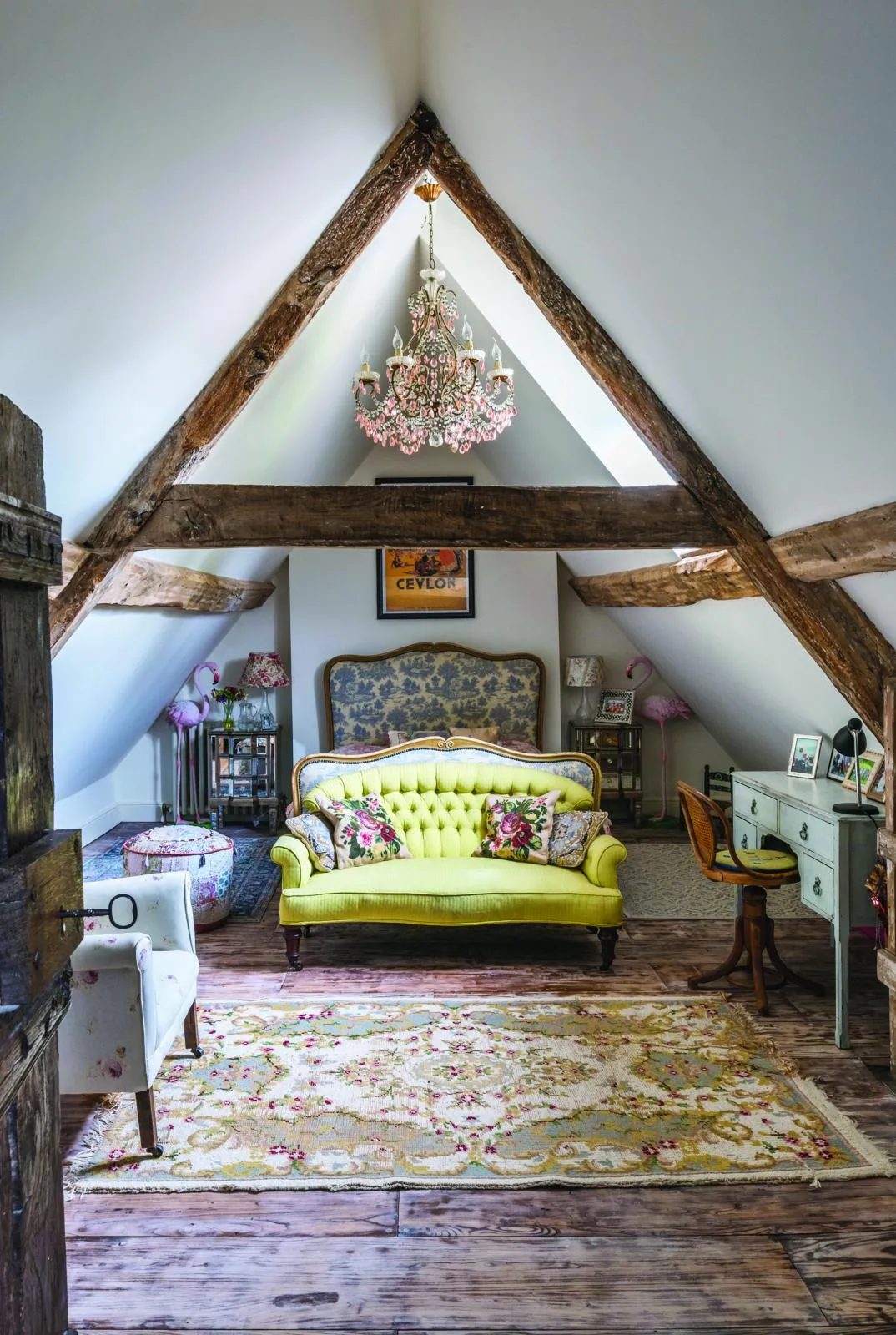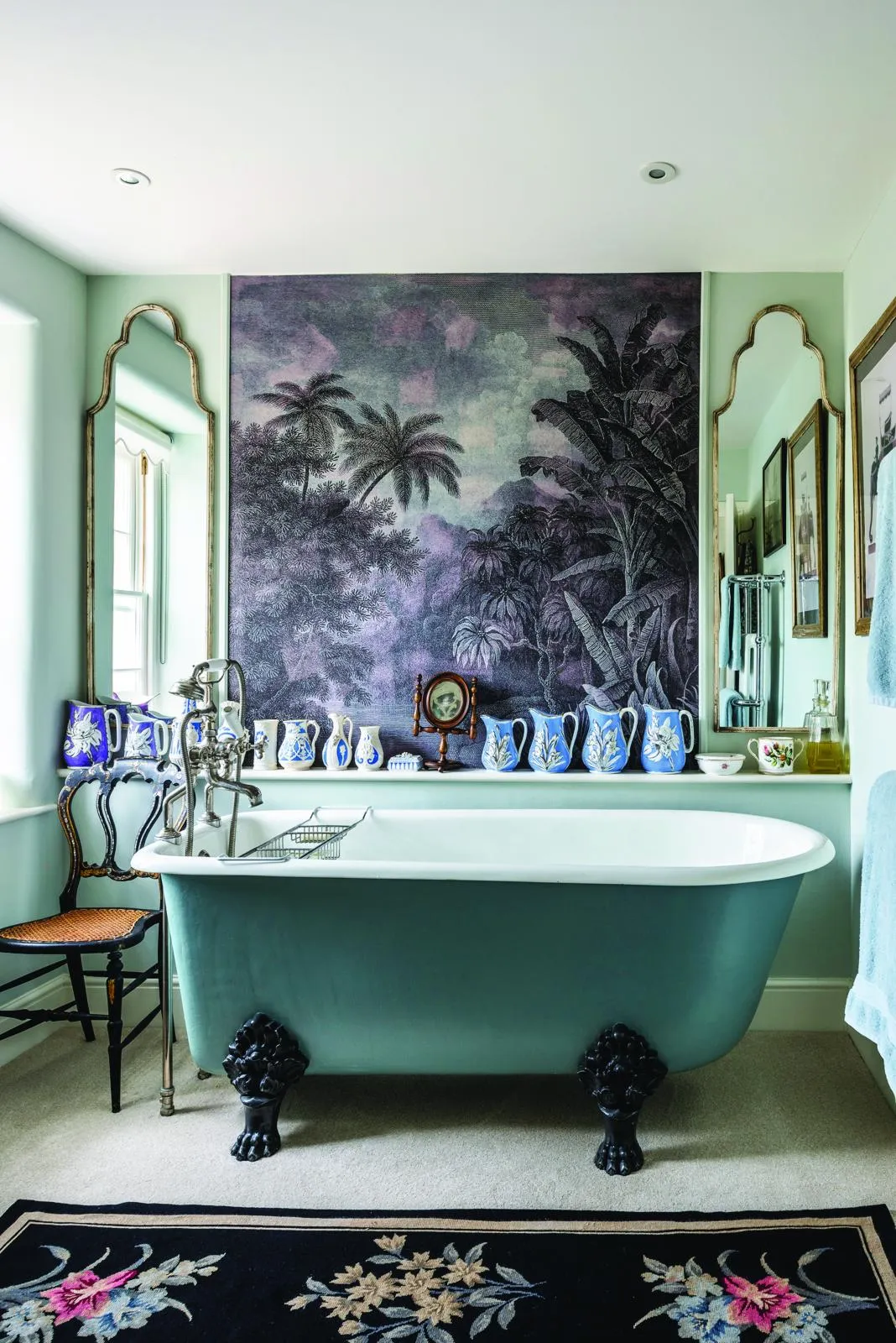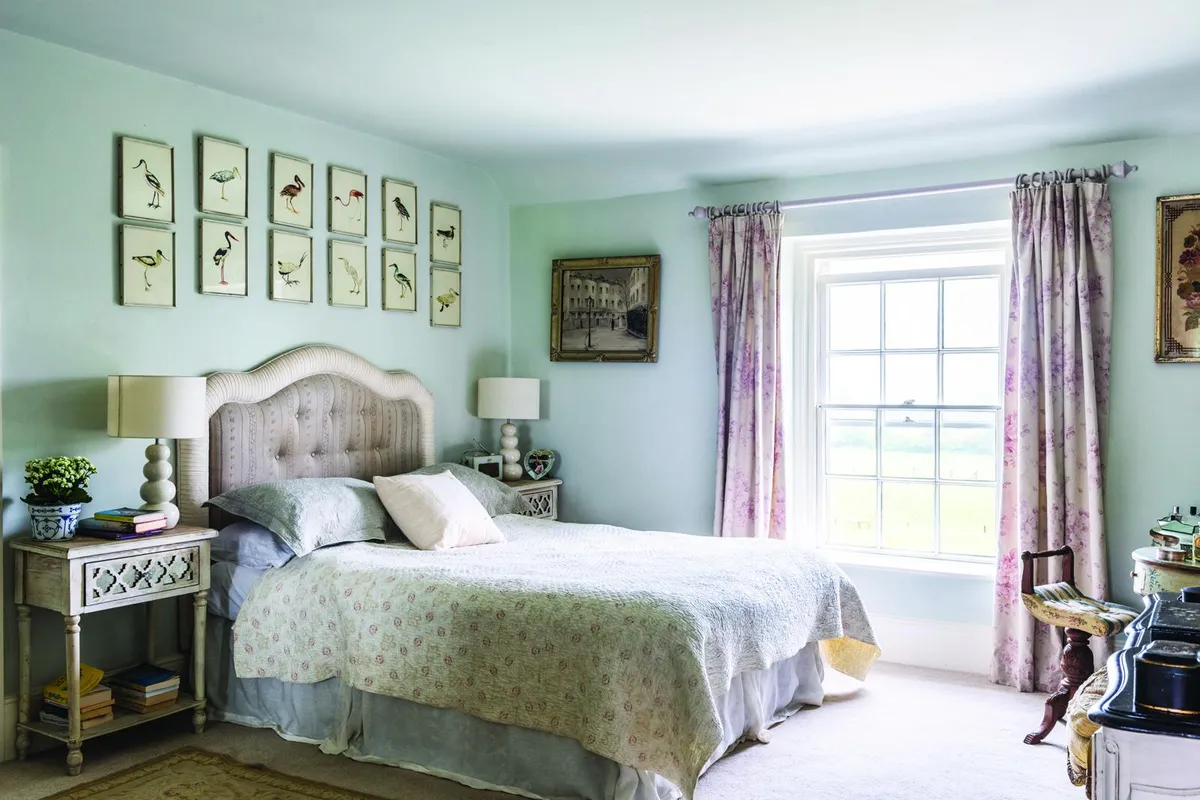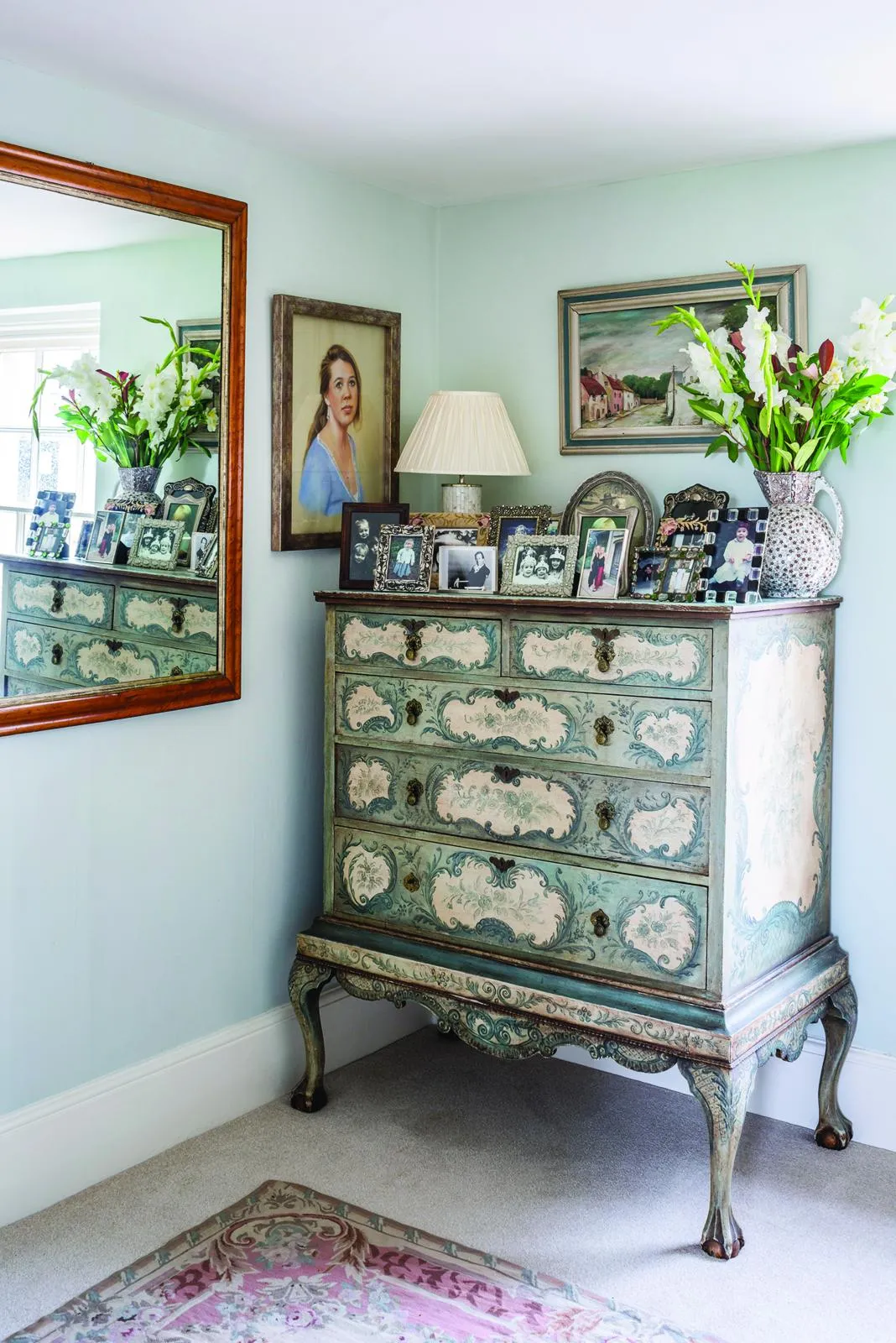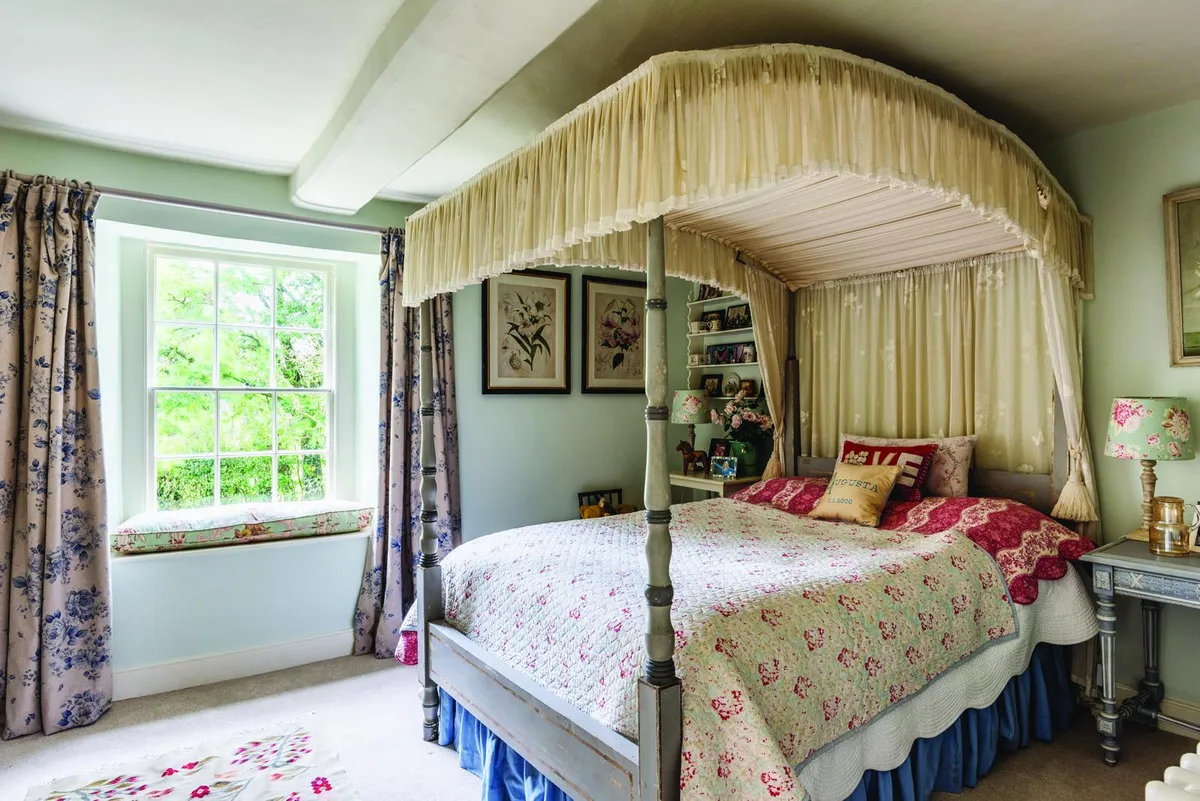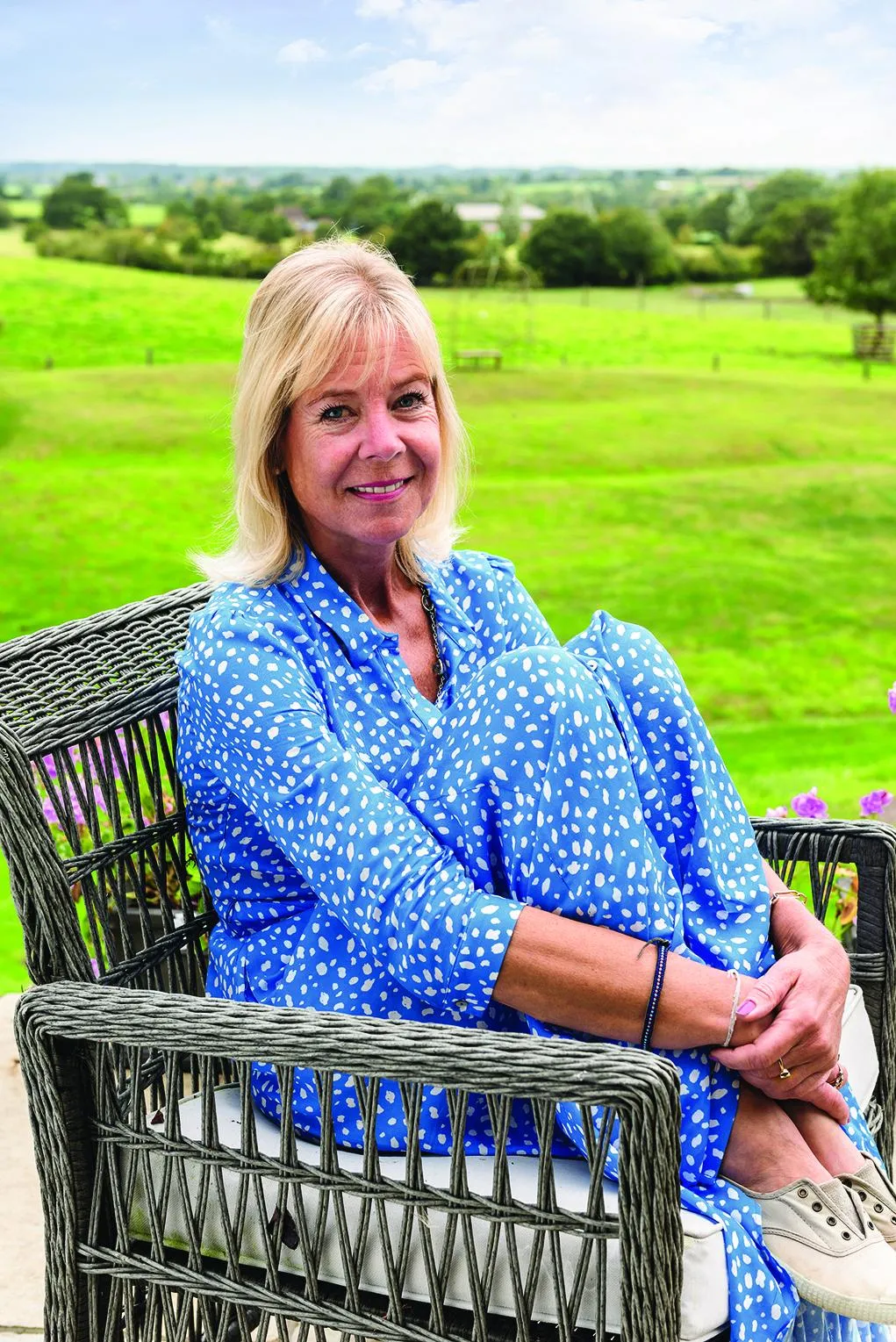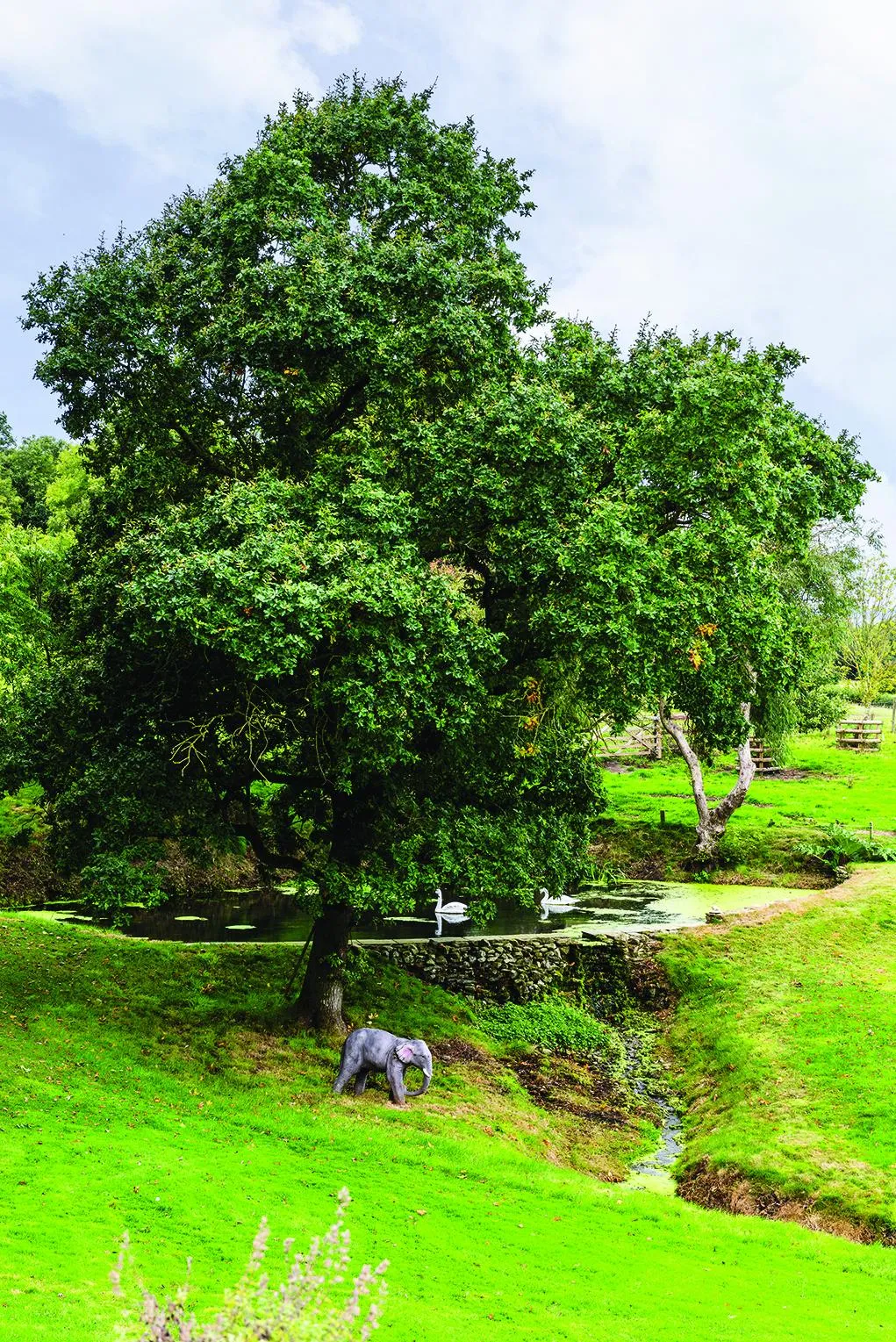Sitting on the terrace of her beautiful Dorset home, Polly Fry admits that she has never been one to go about things in the conventional way, and finding a smaller home for herself and her five daughters following her divorce was no exception.
She couldn’t bear to stray far from the area in which she’d put down roots 30 years earlier, she explains. ‘All the friends I’d made and whose children’s lives have continued to be entwined with those of my children are far too important for me to have upped sticks and moved away.’ But rather than enlisting the help of local estate agents, Polly started scouring the local lanes for her future home, which needed to be large enough for each of her children to have a room of their own. ‘I wanted it to be their home, not just somewhere to stay for the weekend,’ she explains.
After much sleuthing, she found exactly what she was looking for, tucked away in a local backwater she hadn’t been aware of. ‘I knew immediately that this was where I wanted to live!’ It was perfect, she recalls. ‘With a plaque dated 1698 on the façade, all that was lacking was a pair of stone dogs on either side of the front door!’ And by extraordinary coincidence, later that same afternoon, she happened to come across a pair of dogs in a junk shop. ‘I bought them, utterly convinced that they’d soon be outside our new home.’ So far so perfect. There was, however, one small problem. The house wasn’t for sale.
You might also like a writer's Georgian red brick home in Dorset
Polly is nothing if not determined and she enlisted the help of a friend who lived in the village, who took to walking her dog past the house. And it was on one of these ‘walks’ that a chance conversation allowed her to mention to the owner that if he was ever thinking of selling, she knew someone who was interested in buying. He suggested that Polly might take a look, but his wife was less keen and so the viewing never happened and she was forced to bide her time.
‘Over the ensuing months I would often do a slow drive by, blissfully imagining myself as mistress of the house, hanging out the washing or weeding the borders,’ says Polly. ‘Once, with my daughter, I stopped outside and asked her to check the phone signal. She flatly reminded me that as we hadn’t sold our old house, we couldn’t buy even if it were on the market. And as I hadn’t even been inside, it was most definitely not my home, so the phone signal was immaterial.’
Undeterred, Polly continued to keep an eye on the property and later that year noted a decorator’s van and a skip in the drive. Her friend in the village made enquiries and learnt that the family’s youngest child had just left home. Was the house being freshened up prior to being sold, Polly wondered? Fortunately, she had at last found a buyer for her own home and, as soon as contracts were exchanged, she made a hasty visit to the owners and discovered to her delight that the house was about to go on the market. ‘They invited me in to take a look around,’ she recalls, ‘and everything was just how I’d imagined it.’ Knowing that with one or two alterations it would be perfection, she agreed a price and a few weeks later Polly and the stone dogs moved in.
‘It was an emotional moment leaving the lovely house where we’d lived for some 30 years. But I was overwhelmed with joy and relief that I had the prospect of a new life and a new home to look forward to,’ she says and, three years on, she is still elated, pointing out that the move forced her to be ruthless about disposing of possessions. ‘I had already got rid of a vast amount before we left the old house, but then realised that I’d hardly scratched the surface and stupidly had spent a small fortune putting things into storage that would never be used again. The golden rule of William Morris has to be obeyed: “Have nothing in your house that you do not know to be useful, or believe to be beautiful”.’
You might also like explore Deans Court in Dorset
To adapt the property to suit the needs of her convivial family, Polly converted what had been an adjoining garage into a spacious kitchen-dining room, where the understated design of the painted cabinetry allows her collections of art and ceramics their full impact. ‘The existing kitchen was too small,’ she explains. ‘When the girls are home with boyfriends and husbands in tow, we are 12 or more around the table.’ The original kitchen and adjoining conservatory dining area has been remodelled and is now a sunny spot for coffee, writing and relaxing with friends. ‘When I have grandchildren that’s where they’ll do their Lego and colouring in,’ says Polly, thinking ahead.
Whilst most of the furniture was recycled from her previous home, Polly has updated the look by incorporating new pieces such as the velvet-covered sofas in the sitting room – one in a dusty pink, the other grey. A matching pair in the same colour would have been a more conventional choice, but Polly has an innate talent for making her home and those of her clients look as if they’ve evolved over years rather than months. Mindful of her budget, Polly used the internet along with local auctions and antiques fairs to source accessories and furniture, often on a ‘more dash than cash’ basis. ‘It’s about being able to visualise how something will look in situ and having the confidence to buy when you know it’s right.’
The effect might look as if it’s a happy accident, she explains, ‘but I’m constantly rearranging much-loved pieces to give them a fresh look.’ She admits to a particular weakness for vintage needlework and textiles. ‘I have a hoard of quilts and bed covers which are my way of instantly transforming a bedroom. Some of the more decorative pieces of furniture I inherited, whilst others I’ve sourced over the years from auctions, fairs and junk shops.’ Her grandfather was the artist Geoffrey Grinling and she has a number of his paintings, while much of the beautiful china came from her grandmother. ‘Decorative prints of birds and flowers are something else I have a love of, so they also feature strongly,’ she adds.
You might also like escape to the Isle of Purbeck
After a year or more of planning, building and decorating, the house is now more or less as Polly wants it. Not long ago, one of her daughters came to stay with her boyfriend and as she sat down to breakfast she said the house felt more like home than the old one ever did. ‘I cried tears of joy inside,’ says Polly. ‘We had made something lovely out of heartbreak.’
Polly has done a good deal of work beyond the house as well. Now, in addition to the stone dogs, there is a stream, ‘something I’ve always coveted, even though it’s only a couple of feet wide and one inch deep’, she laughs, and she has planted a lovely wisteria, something she’d never been able to grow despite years of trying. The views are filled with a neighbour’s sheep, ‘munching their way across my horizon’. It transpires that the neighbour’s children were at school with Polly’s daughters. ‘The last few years have hardly been a bed of roses but every morning when I open my curtains I feel truly blessed.’
She feels part of a community, she says. ‘And being in a village where I can walk to the pub to meet friends for lunch is a delight. I hope I can provide a home for my girls for many years to come and we can together see where the sheep safely graze. After many ‘sheepless’ nights, I now know and feel comforted that when my girls tap their red sequinned shoes together, humming “There’s no place like home” this is the home they are dreaming and longing for.’
